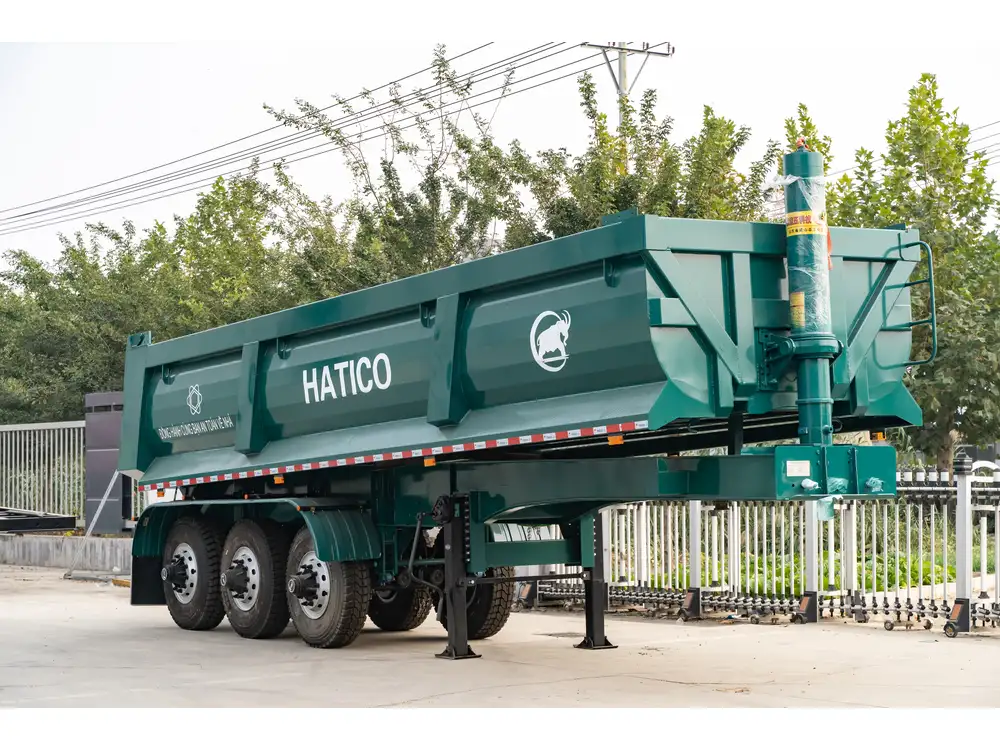Coil packages are integral components in the transportation industry, specifically related to flatbed trailers. In this comprehensive guide, we will delve into various aspects of coil packages, including their structure, applications, and the best practices for securing them on flatbed trailers. By addressing common queries and providing detailed insights, we aim to equip you with the knowledge needed to enhance your logistical operations and ensure optimal handling of coil packages.
What is a Coil Package?
Coil packages typically consist of rolled metal, such as steel or aluminum, which is bound into a circular shape. These coils range in size, weight, and thickness, depending on the specific industrial applications they serve. The significance of coil packages lies in their widespread use in various manufacturing processes, including:
- Automotive Production: Coils of steel sheets are essential in producing automobile components.
- Construction Materials: Rolled steel is fundamental in constructing buildings and infrastructure.
- Electronics Manufacturing: Coiling ensures efficient use of materials in creating electronic components.
Characteristics of Coil Packages
Weight and Dimensions: Coil weights can vary, typically ranging from 1,500 lbs to over 20,000 lbs, demanding careful considerations during loading and transportation. Dimensions also vary, with diameters usually between 36 to 84 inches.
Material Types: Common materials include carbon steel, stainless steel, aluminum, and various composites—each possessing unique properties that influence transport methods and securing techniques.
Surface Finish: The surface of coil packages can range from bare metal to specialty coatings, affecting their handling requirements.

Importance of Proper Handling
Transporting coil packages necessitates attention to detail due to their weight and shape. Improper handling can lead to damage, environmental hazards, or accidents on the road. Thus, understanding coil packages is pivotal for industries reliant on this vital resource.
Transporting Coil Packages: Key Considerations
1. Selecting the Right Flatbed Trailer
Choosing an appropriate flatbed trailer is crucial for effective coil transportation. The decision largely hinges on:
| Trailer Type | Description | Load Capacity |
|---|---|---|
| Standard Flatbed | Commonly used, suited for various cargo types. | Up to 48,000 lbs |
| Step Deck Flatbed | Provides lower deck height for taller loads. | Varies, ideal for coils |
| Tag Along Trailers | Efficient for smaller or lightweight coils. | Varies |

2. Safety Regulations and Compliance
Adhering to safety regulations is non-negotiable in coil transportation. This involves:
- Weight Limits: Ensuring the total weight adheres to state and federal regulations to prevent penalties.
- Secure Load Standards: Compliance with the Federal Motor Carrier Safety Administration (FMCSA) guidelines for load securement.
3. Preparing the Coil Package for Transport
Proper preparation significantly reduces the risk of accidents and ensures cargo integrity:
- Inspect the Coil: Check for any damage or irregularities that could complicate transport.
- Assess Load Distribution: Properly balance the load to prevent trailer instability.
Securing Coil Packages on Flatbed Trailers

1. Choosing the Right Tie-Down Equipment
Selecting appropriate tie-down equipment is imperative for securing coil packages effectively. Common options include:
- Chains & Binders: Provide strong resistance against shifting. Ensure compliance with size and grade regulations.
- Straps: Consider using ratchet straps for lighter coils, ensuring they have sufficient width to distribute pressure.
| Tie-Down Method | Strength Rating | Best Use |
|---|---|---|
| Chain and Binder | Up to 50,000 lbs | Heavy coils |
| Ratchet Straps | Up to 6,000 lbs | Lighter loads |
| Steel Cables | Varies | Extra security for all load types |
2. Securing Techniques
Various techniques can be employed to secure coil packages effectively:
a. Cross Tying
Cross tying uses a crisscross pattern to ensure the load stays snugly in place without excessive movement.

b. Blocking and Bracing
Utilizing blocking (precision wood beams) and bracing can protect coils from shifting during transport. This technique employs angles to reinforce stability.
c. Use of Coil Racks
Coil racks provide dedicated spaces for coil packages, enhancing stability and safety during transit. Opting for this method can yield increased efficiency and reduce transport risk.
Best Practices for Transport Drivers

1. Pre-Trip Inspection
Conducting a thorough pre-trip inspection is critical. Drivers should ensure:
- All tie-downs are properly attached.
- Tires are in good condition to handle added weight.
- Brakes and lights are functioning optimally.
2. During Transport
Drivers must remain vigilant throughout the journey:
- Monitor Load Stability: Frequent checks on load conditions help identify any shifts or issues.
- Adhere to Speed Limits: Maintain recommended speed limits, taking into account increased stopping distances with heavier loads.
3. At the Delivery Site
Ensuring safe unloading is equally significant; prepare for:
- Precise Placement: Positioning the flatbed trailer correctly prevents accidents during unloading.
- Utilizing Appropriate Equipment: If using cranes or forklifts for unload, ensure operators are trained.

Challenges in Coil Transportation
Despite prudent measures, various challenges may arise:
Weather Conditions: Rain, snow, or ice can complicate transport safety. Utilizing appropriate tarps or weatherproofing techniques is essential.
Road Conditions: Uneven surfaces can disrupt load stability; drivers should account for these when planning routes.
Mitigation Strategies
- Maintain updated weather forecasts.
- Select routes that minimize risk exposure.
Conclusion
Understanding coil packages and their transportation intricacies is critical for manufacturers and transporters alike. From choosing the right flatbed trailer to securing load safety, each step plays a significant role in ensuring efficient operations and avoiding common pitfalls. By employing best practices and considering external factors, businesses can optimize their logistical operations, ultimately leading to increased profitability and satisfaction for all stakeholders.
Investing in quality equipment, rigorous training, and maintaining adherence to regulations collectively facilitates the safe and efficient transport of coil packages on flatbed trailers. In adopting a proactive approach, industry players can enhance their market competitiveness while safeguarding their assets – a quintessential component for long-term success.



